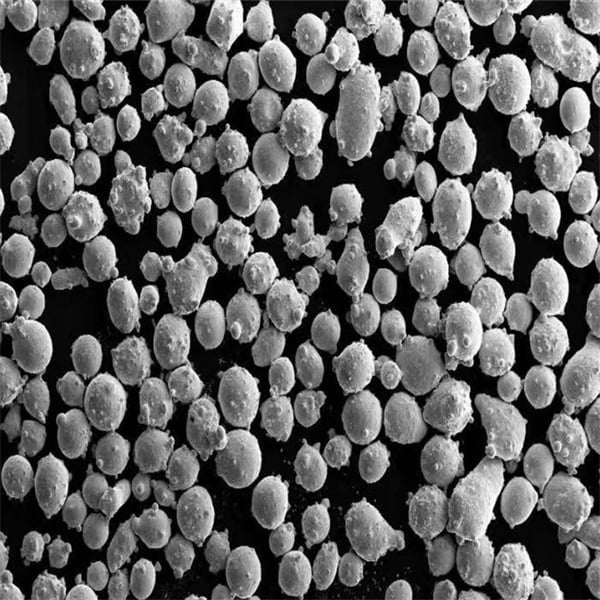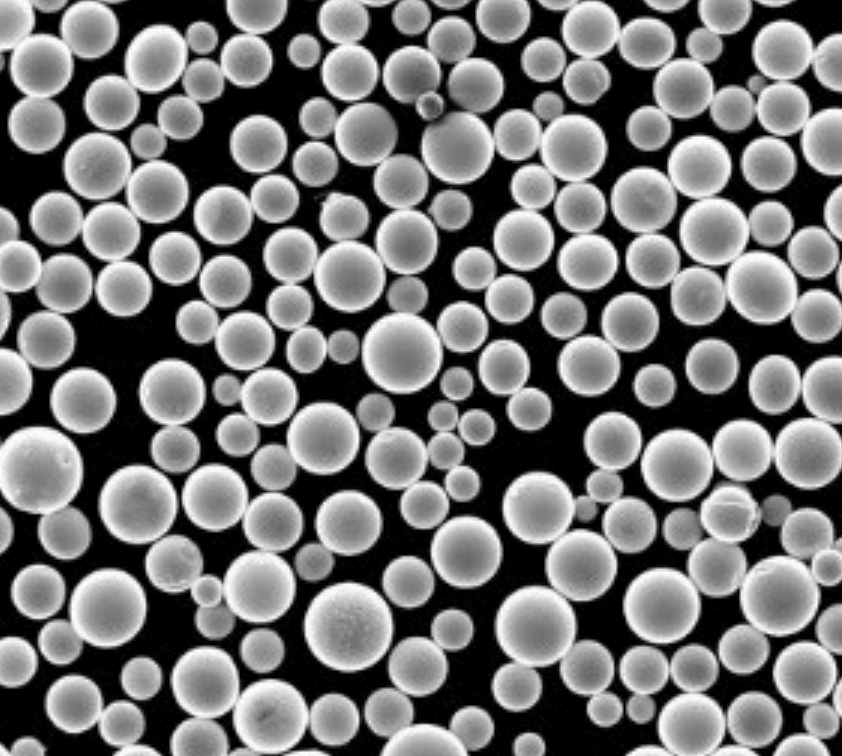Atomizacja próżniowa w gazie obojętnym
Spis treści
Przegląd
W świecie zaawansowanej produkcji dążenie do doskonałości w materiałach doprowadziło do rozwoju wielu wyrafinowanych technik. Jedną z takich rewolucyjnych metod jest Atomizacja próżniowa w gazie obojętnym (VIGA). Proces ten odgrywa kluczową rolę w produkcji wysokiej jakości proszków metalowych, niezbędnych do różnych zastosowań, takich jak produkcja addytywna, metalurgia proszków i specjalistyczne powłoki. W tym artykule zagłębiamy się w zawiłości VIGA, badając jego procesy, korzyści, ograniczenia i zastosowania.
Przegląd rozpylania gazów obojętnych w próżni
Atomizacja próżniowa gazem obojętnym (VIGA) to najnowocześniejsza metoda stosowana do produkcji drobnych, sferycznych proszków metalowych. Proces ten obejmuje topienie metalu w próżni, a następnie wprowadzenie gazu obojętnego w celu rozpylenia stopionego metalu na drobne kropelki, które zestalają się w drobne proszki. VIGA jest znana ze swojej zdolności do produkcji proszków o wysokiej czystości i kontrolowanych rozmiarach cząstek, co czyni ją niezastąpioną w branżach wymagających wysokiej precyzji.

Jak Atomizacja próżniowa w gazie obojętnym Prace
VIGA działa w kontrolowanym środowisku, aby zapewnić produkcję proszków metalowych najwyższej jakości. Oto szczegółowy opis procesu:
- Topienie:Metal lub stop jest topiony w próżniowym piecu indukcyjnym.
- Atomizacja:Roztopiony metal wlewa się przez dyszę do komory, gdzie jest rozpylany przez strumień gazu obojętnego (np. argonu lub azotu) pod wysokim ciśnieniem.
- Solidyfikacja:Te drobne kropelki metalu szybko stygną i zestalają się, zamieniając w drobny, kulisty proszek.
- KolekcjaProszek zbiera się w komorze, oddziela od gazu obojętnego i przesiewa w celu uzyskania pożądanego rozkładu wielkości cząstek.
Kluczowe modele proszków metalowych produkowane przez VIGA
Proces VIGA może produkować szeroką gamę proszków metalowych, z których każdy ma unikalne właściwości dostosowane do konkretnych zastosowań. Oto kilka godnych uwagi modeli:
| Model proszku metalowego | Skład | Właściwości | Zastosowania |
|---|---|---|---|
| Stal nierdzewna 316L | Fe-16,5Cr-10Ni-2Mo | Wysoka odporność na korozję, dobra spawalność | Implanty medyczne, komponenty lotnicze |
| Ti-6Al-4V | Ti-6Al-4V | Wysoki stosunek wytrzymałości do wagi, biokompatybilność | Części lotnicze, urządzenia biomedyczne |
| AlSi10Mg | Al-10Si-0,4Mg | Lekkość, dobra przewodność cieplna | Części samochodowe, wymienniki ciepła |
| Inconel 718 | Ni-52Cr-19Fe-5Nb-3Mo-1Ti | Odporność na wysokie temperatury, odporność na korozję | Łopatki turbin, reaktory jądrowe |
| Miedź | Czysta Cu | Doskonała przewodność elektryczna i cieplna | Elementy elektryczne, radiatory |
| Stal maraging (18Ni300) | Fe-18Ni-9Co-5Mo-1,5Ti | Wysoka wytrzymałość, dobra ciągliwość | Narzędzia, części o wysokiej wydajności |
| Kobalt-chrom (CoCrMo) | Co-28Cr-6Mo | Wysoka odporność na zużycie, biokompatybilność | Implanty dentystyczne, urządzenia ortopedyczne |
| Superstopy na bazie niklu (Hastelloy X) | Ni-22Cr-18Fe-9Mo | Wyjątkowa odporność na utlenianie i korozję | Przemysł lotniczy, przetwórstwo chemiczne |
| Stop aluminium 7075 | Al-5,6Zn-2,5Mg-1,6Cu | Wysoka wytrzymałość, dobra odporność na zmęczenie | Ramy lotnicze, artykuły sportowe |
| Stellite 21 | Współczynnik-28Cr-4Mo | Odporność na zużycie, wysoka stabilność temperaturowa | Narzędzia tnące, elementy silnika |
Zastosowania atomizacji gazów obojętnych w próżni
Wszechstronność proszków produkowanych przez VIGA otwiera liczne zastosowania w różnych branżach. Oto niektóre z najważniejszych zastosowań:
| Przemysł | Zastosowania |
|---|---|
| Lotnictwo i kosmonautyka | Łopatki turbin, elementy konstrukcyjne, elementy złączne |
| Medyczny | Implanty ortopedyczne, protetyka stomatologiczna |
| Motoryzacja | Części silnika, lekkie elementy konstrukcyjne |
| Elektronika | Tusze przewodzące, materiały lutownicze |
| Energia | Reaktory jądrowe, ogniwa paliwowe |
| Oprzyrządowanie | Narzędzia tnące, formy, matryce |
| Wytwarzanie przyrostowe | Druk 3D, prototypowanie |
| Powłoki | Powłoki barierowe termiczne, powłoki odporne na zużycie |
Zalety Atomizacja próżniowa w gazie obojętnym
VIGA oferuje szereg zalet, które czynią ją preferowanym wyborem w produkcji proszków metalowych:
- Wysoka czystość:Środowisko próżniowe minimalizuje zanieczyszczenie, gwarantując proszki o wysokiej czystości.
- Kontrolowany rozmiar cząstek:Precyzyjna kontrola parametrów atomizacji pozwala na uzyskanie jednorodnych rozmiarów cząstek.
- Cząstki sferyczne:Proces ten wytwarza proszki kuliste, co poprawia sypkość i gęstość upakowania.
- Wszechstronność: Możliwość przetwarzania szerokiej gamy metali i stopów.
- Zredukowane utlenianie:Środowisko gazu obojętnego ogranicza utlenianie, chroniąc właściwości proszku.
Wady rozpylania gazów obojętnych w próżni
Pomimo wielu zalet VIGA ma również pewne ograniczenia:
- Wysoki koszt:Koszty sprzętu i eksploatacji są stosunkowo wysokie w porównaniu z innymi metodami atomizacji.
- Złożoność:Proces ten wymaga skomplikowanych systemów sterowania i wykwalifikowanych operatorów.
- Ograniczona skala produkcji:VIGA jest zazwyczaj bardziej przystosowana do produkcji na małą i średnią skalę.
Porównanie VIGA z innymi metodami atomizacji
Wybierając metodę atomizacji, kluczowe jest porównanie VIGA z innymi technikami, takimi jak atomizacja wodna i atomizacja gazowa. Oto, jak się one wypadają:
| Metoda | Kształt cząsteczki | Czystość | Koszt | Skala produkcji | Zastosowania |
|---|---|---|---|---|---|
| VIGA | Kulisty | Wysoki | Wysoki | Średni | Branże o wysokiej precyzji, lotnictwo i kosmonautyka |
| Atomizacja wody | Nieregularny | Umiarkowany | Niski | Wysoki | Metalurgia proszkowa, proszki stalowe |
| Atomizacja gazu | Kulisty | Wysoki | Umiarkowany | Średni | Produkcja addytywna, stopy specjalne |

Specyfikacje, rozmiary i standardy
Aby zapewnić spójność i jakość, proszki metalowe produkowane przez VIGA spełniają określone normy i specyfikacje:
| Metalowy proszek | Zakres wielkości cząstek (µm) | Standardy |
|---|---|---|
| Stal nierdzewna 316L | 15-45, 45-150 | ASTM A276, ISO 5832-1 |
| Ti-6Al-4V | 15-53, 53-150 | ASTM F2924, ISO 5832-3 |
| AlSi10Mg | 20-63, 63-125 | Norma ISO 209-1 |
| Inconel 718 | 15-45, 45-150 | Norma ISO 6208 |
| Miedź | 10-75, 75-150 | Norma ISO 3497 |
| Stal maraging (18Ni300) | 15-45, 45-150 | Norma ISO 4955 |
| Kobalt-chrom (CoCrMo) | 20-53, 53-150 | ASTM F1537, ISO 5832-4 |
| Superstopy na bazie niklu (Hastelloy X) | 15-53, 53-150 | Norma ISO 6208 |
| Stop aluminium 7075 | 20-63, 63-125 | Norma ISO 6362-2 |
| Stellite 21 | 20-63, 63-150 | ASTM F75, ISO 5832-4 |
Dostawcy i szczegóły dotyczące cen
Znalezienie wiarygodnych dostawców i zrozumienie szczegółów cenowych jest niezbędne do zaopatrzenia. Oto przegląd niektórych wybitnych dostawców i ich cen:
| Dostawca | Oferowane proszki metali | Zakres cen (za kg) | Lokalizacja |
|---|---|---|---|
| Sandvik Osprey | Stal nierdzewna, tytan | $150 – $300 | Szwecja |
| Technologia Carpenter | Stopy niklu, stopy kobaltu | $200 – $500 | USA |
| Höganäs AB | Proszki stalowe, aluminium | $50 – $200 | Szwecja |
| Technologia LPW | Różne stopy, proszki niestandardowe | $100 – $400 | WIELKA BRYTANIA |
| AP&C (GE Additive) | Tytan, aluminium | $200 – $600 | Kanada |
Porównanie zalet i wad
Zrozumienie zalet i ograniczeń systemu VIGA jest kluczowe dla podejmowania świadomych decyzji:
| Plusy | Wady |
|---|---|
| Wysoka czystość i kontrolowany skład | Wysokie koszty sprzętu i eksploatacji |
| Cząstki kuliste o dobrej płynności | Wymaga wykwalifikowanych operatorów |
| Wszechstronność w zakresie typów metali i stopów | Ograniczone do produkcji na małą i średnią skalę |
| Zmniejszone utlenianie dzięki gazowi obojętnemu | Złożony proces z rygorystyczną kontrolą |

FAQ
| Pytanie | Odpowiedź |
|---|---|
| Do czego służy VIGA? | VIGA służy do produkcji wysokiej jakości proszków metalowych do zastosowań w przemyśle lotniczym, medycznym i produkcji addytywnej. |
| Czym VIGA różni się od atomizacji gazowej? | VIGA wykorzystuje próżnię i gaz obojętny, aby zminimalizować zanieczyszczenie i utlenianie, co pozwala na uzyskanie proszków o wyższej czystości. |
| Jakie metale można obrabiać przy użyciu urządzenia VIGA? | Szeroka gama metali i stopów, obejmująca stal nierdzewną, tytan, aluminium i superstopy na bazie niklu. |
| Jakie zakresy wielkości cząstek można uzyskać dzięki VIGA? | VIGA może produkować proszki o rozmiarach cząstek od 10 µm do 150 µm. |
| Czy VIGA jest opłacalna? | Chociaż VIGA oferuje wysoką jakość i precyzję, jest ona ogólnie droższa od innych metod atomizacji. |
Podsumowując, atomizacja próżniowa gazem obojętnym wyróżnia się jako wiodąca technika produkcji wysokiej jakości proszków metalowych, niezbędna do różnych zastosowań wymagających wysokiej precyzji. Jej zdolność do produkcji sferycznych proszków o wysokiej czystości i kontrolowanych rozmiarach cząstek sprawia, że jest niezastąpiona w dziedzinach od lotnictwa po implanty medyczne. Chociaż wiąże się z wyższymi kosztami i złożonością, korzyści często przewyższają wady w przypadku zastosowań wymagających najwyższej jakości materiałów. W miarę jak branże wciąż wprowadzają innowacje, rola zaawansowanych technik, takich jak VIGA, w kształtowaniu przyszłości produkcji nie może być przeceniona.
Udostępnij
MET3DP Technology Co., LTD jest wiodącym dostawcą rozwiązań w zakresie produkcji addytywnej z siedzibą w Qingdao w Chinach. Nasza firma specjalizuje się w sprzęcie do druku 3D i wysokowydajnych proszkach metali do zastosowań przemysłowych.
Zapytaj o najlepszą cenę i spersonalizowane rozwiązanie dla Twojej firmy!
Powiązane artykuły

Wysokowydajne segmenty łopatek dysz: Rewolucja w wydajności turbin dzięki drukowi 3D w metalu
Czytaj więcej "
Drukowane w 3D mocowania dla samochodowych czujników radarowych: Precyzja i wydajność
Czytaj więcej "Informacje o Met3DP
Ostatnia aktualizacja
Nasz produkt
KONTAKT
Masz pytania? Wyślij nam wiadomość teraz! Po otrzymaniu wiadomości obsłużymy Twoją prośbę całym zespołem.

Proszki metali do druku 3D i produkcji addytywnej
PRODUKT
cONTACT INFO
- Miasto Qingdao, Shandong, Chiny
- [email protected]
- [email protected]
- +86 19116340731















